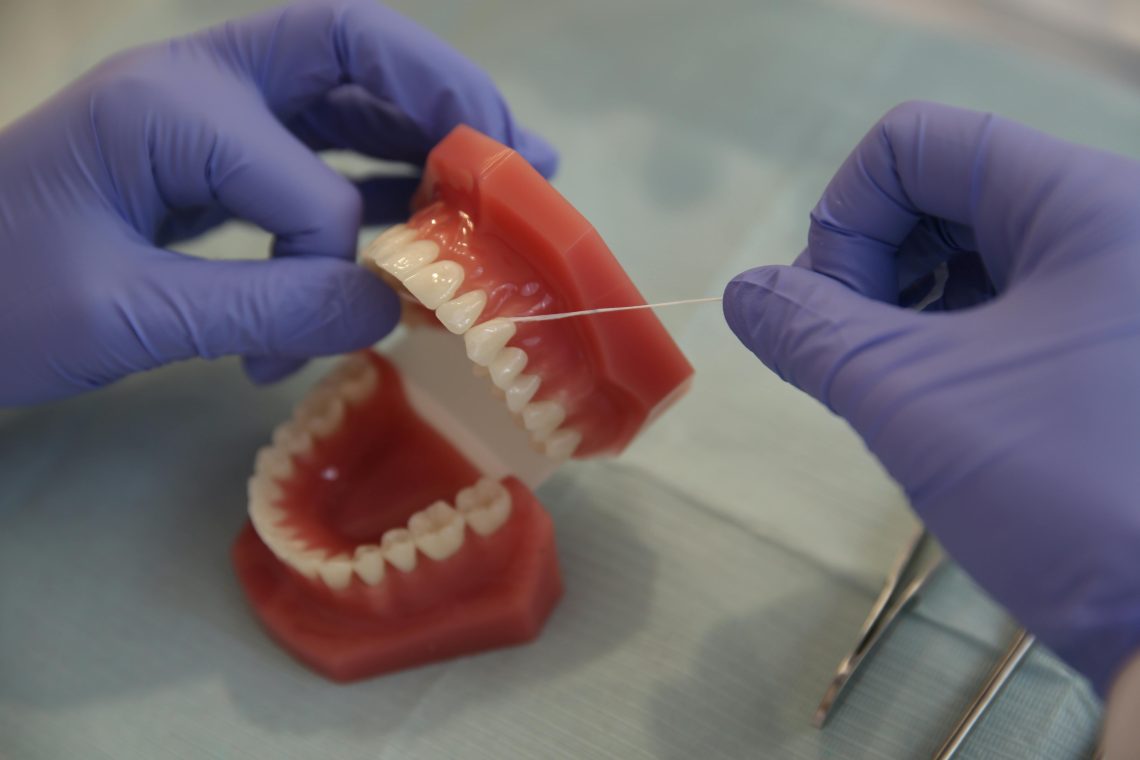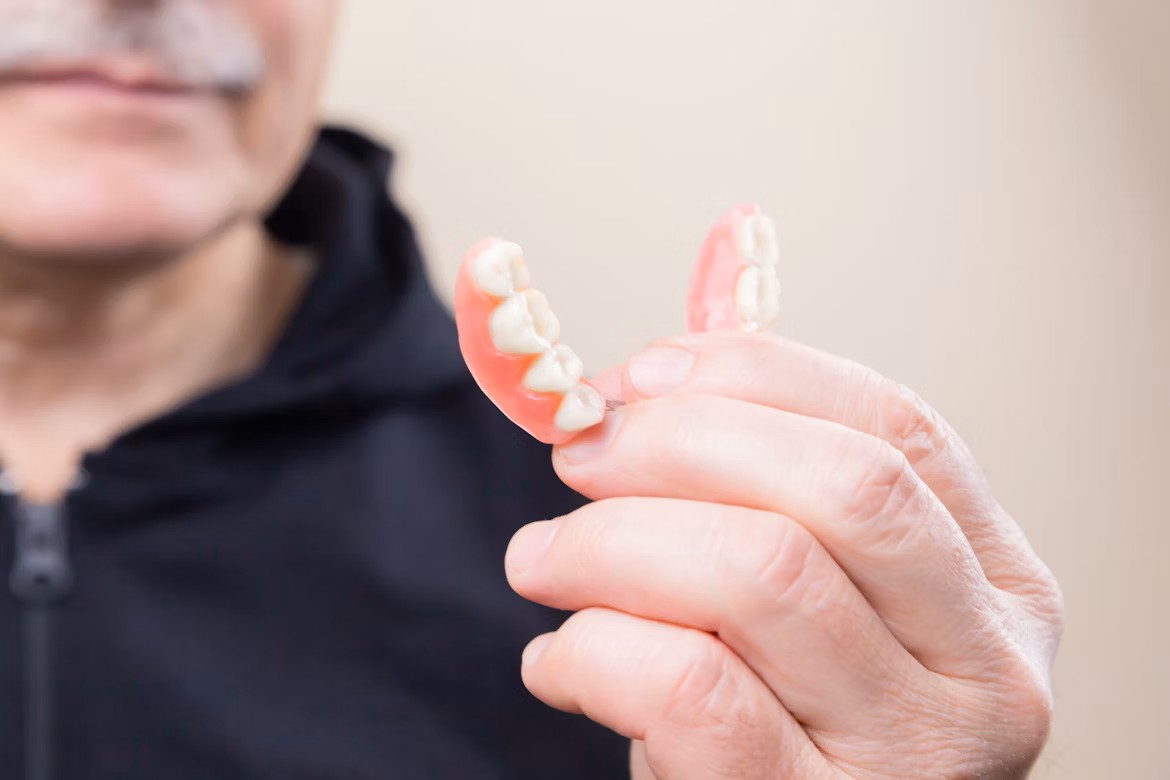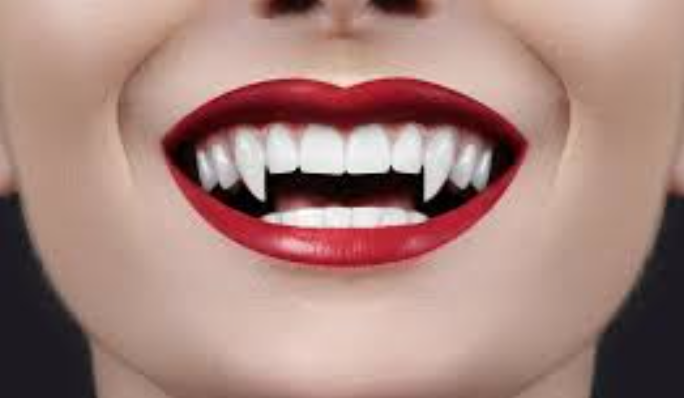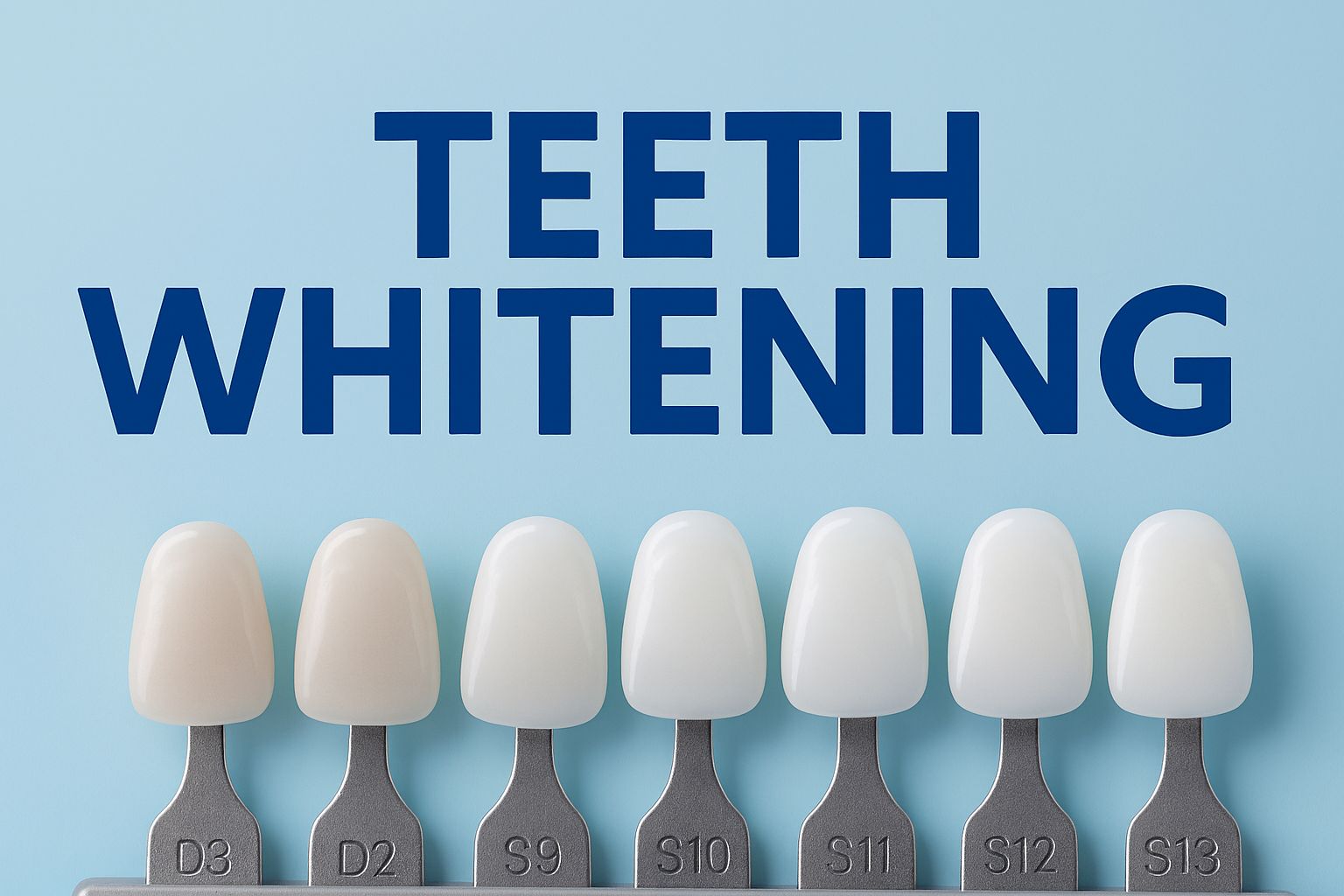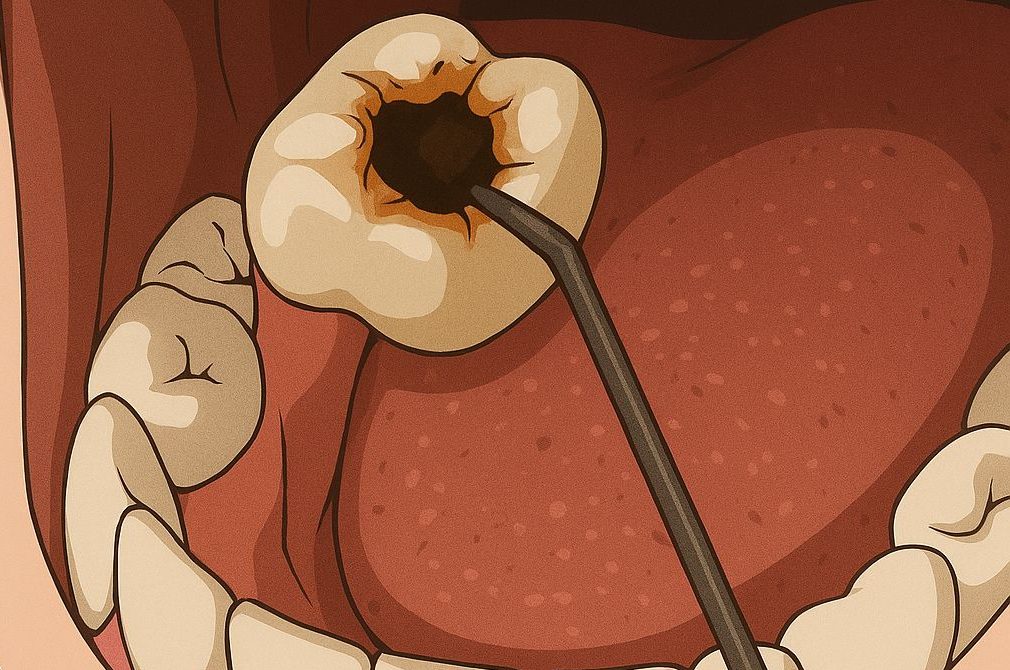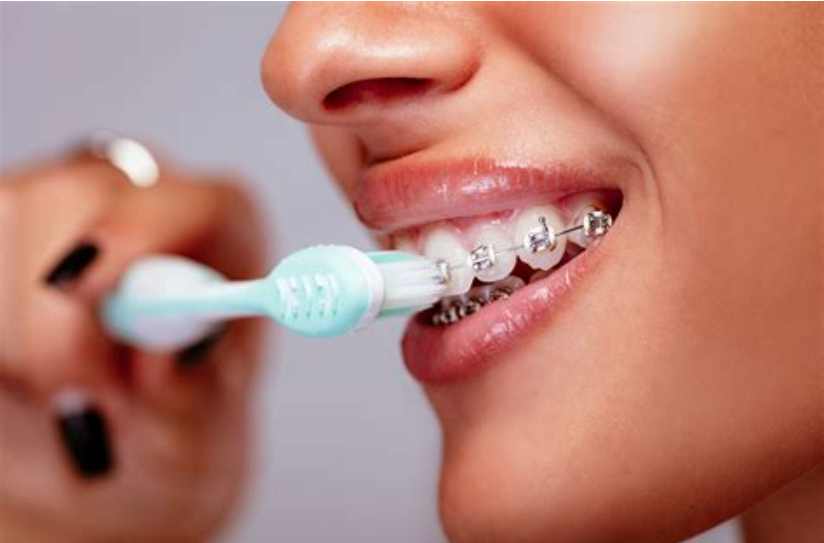Ever had your floss snap, fray, or get hopelessly stuck between your teeth just when you thought you were done cleaning? You’re not alone — and you’re definitely not doing it wrong. It happens to almost everyone at some point, especially if you have tight contacts, dental fillings, or braces. But here’s the good news: you can fix it safely at home without hurting your gums or damaging your dental work.
In this guide, you’ll learn how to remove floss stuck in teeth safely, prevent it from happening again, and understand what it might reveal about your oral health.
Don’t Panic — It Happens to Everyone

It’s a common condition to have floss stuck in teeth during oral care. The first thing to remember is not to panic. In most cases, the floss can be removed easily at home. Pulling too hard can cause gum injury, bleeding, or even chip a filling. Take a deep breath and calm yourself before acting. Observe if the floss is simply wedged tightly, caught on dental work, or broken between teeth. This quick evaluation will help you decide what to do next.
It’s also worth noting that this problem doesn’t always mean you flossed incorrectly. Sometimes, it’s caused by rough spots on your teeth, old fillings, or the natural tightness of your teeth. Even people with perfect oral hygiene face this occasionally.
Assess the Situation with a Mirror
Use a handheld mirror or your bathroom mirror under good lighting to see what’s happening. Check how the floss is stuck in the teeth, and identify if it’s stuck near a crown, filling, or orthodontic wire. If you see a small fray or tangle, avoid pulling upward — that can make it worse. Instead, angle the floss horizontally and check for resistance.
In Singapore, where many adults undergo orthodontic treatments or wear retainers, floss can easily get caught on wires or retainers. If that happens frequently, consider switching to a water flosser or floss threader to make cleaning safer and easier.
Step-by-Step: Safe Methods to Remove Stuck Floss in Teeth at Home
Follow these steps carefully. Move slowly and avoid force. If discomfort increases or bleeding continues beyond a few minutes, stop and seek dental help.
3.1 Gentle Sliding Technique
Hold both ends of the floss stuck in the teeth and gently slide it back and forth using a smooth sawing motion instead of yanking upwards. Guide the floss along the curve of each tooth (the “C-shape technique”) rather than forcing it through the tight contact point. If it doesn’t move easily, stop and switch methods. This approach is usually enough for minor snags and prevents unnecessary gum trauma.
3.2 Rinse with Warm or Salt Water
When you have your floss stuck in teeth, rinse your mouth with warm water or a mild salt-water solution (half a teaspoon of salt in a glass of warm water). The combination of warmth and gentle pressure can soften tissues and help loosen the floss. Salt water also has a natural antibacterial effect, which helps reduce irritation or bleeding if your gums were scratched during flossing.
3.3 The “Oil-Coated Floss” Trick
Sometimes, floss gets stuck because of excessive friction in tight teeth. Try lightly coating a new floss strand with a thin layer of coconut oil, olive oil, or medical-grade petroleum jelly. This creates a smoother surface that helps it slide through snug contacts. Avoid using animal fats like lard, which can attract bacteria and leave residue. This simple technique works surprisingly well and prevents further fraying or breakage of the floss stuck in teeth.
3.4 The “Flexible Flosser” Technique
If the floss stuck in the teeth remains trapped, use a floss pick with a slightly curved handle. Insert the flexible tip into the small triangular space beneath the contact point. Apply gentle horizontal pressure to slightly open the gap between teeth — never push downward toward the gums. With your other hand, ease the floss strand out. This method can relieve tension and release the trapped floss safely without hurting the gum tissue.
3.5 Interdental Brush or Flosser Tool
An interdental brush is especially useful for people with braces, bridges, or tight gaps. These small, conical brushes are designed to clean between teeth and can help remove the floss stuck in teeth. Choose the smallest brush that fits without forcing it. For extra control, move it gently from the gum line upward, never twisting or scraping against the enamel.
3.6 Use Clean Tweezers
If a short piece of floss remains stuck in teeth and you can’t reach it with your fingers, clean a pair of smooth-tipped tweezers with soap and warm water. Gently grasp the floss and pull it free without digging into your gums. This method should only be used when other approaches fail. If the floss doesn’t move or breaks again, it’s best to stop and seek professional help.
When to Stop and See a Dentist
If you’ve tried the methods above and the floss still won’t come out, or if your gums are bleeding heavily or swollen, it’s time to call your dentist. Singapore dentists are well-equipped with fine dental instruments to remove stuck floss safely. More importantly, they can identify the reason why the floss got stuck — it could be a chipped filling, tartar buildup, or a hidden cavity. These issues need quick attention to prevent further complications like gum inflammation or infection.
Waiting too long can make things worse. A short visit to your dental clinic is often enough to fix the issue within minutes and prevent discomfort from escalating.
Common Causes of Floss Getting Stuck
Floss can get stuck for many reasons. Knowing the cause helps prevent repeat incidents. Below are common scenarios seen in Singapore clinics.
| Cause | Typical Scenario | What to Do |
|---|---|---|
| Tight tooth contacts | Natural alignment or minor crowding | Use PTFE floss or floss picks |
| Rough fillings or crowns | Old restorations or uneven edges | See your dentist for polishing |
| Tartar build-up | Common if professional cleaning overdue | Schedule scaling and polishing |
| Frayed or poor-quality floss | Old or cheap floss that breaks easily | Switch to waxed or glide-type floss |
Prevention: How to Avoid Floss Getting Stuck Again
Once you’ve successfully removed the floss stuck in teeth, take steps to ensure it doesn’t happen again. Preventing floss from getting stuck saves time, keeps your gums healthy, and helps you maintain smoother, cleaner tooth surfaces. With a few smart adjustments, you can make flossing a stress-free part of your daily oral care routine.
1. Choose the Right Type of Floss
Selecting the right floss is key to preventing snags. Waxed floss and PTFE (glide-type) floss are ideal for people with tight teeth, as their smooth coating allows easy movement between contacts. Avoid using overly fibrous or uncoated floss, which can shred and break more easily. If you have sensitive gums or dental work such as crowns, implants, or braces, use super floss or silky microfilament floss designed for these conditions.
2. Master the Correct Flossing Technique
Proper technique makes all the difference. Instead of snapping the floss straight down into your gums, curve it around each tooth in a gentle C-shape. Slide it up and down along the tooth’s surface to remove plaque and debris, then pull it out horizontally rather than vertically. This technique cleans thoroughly while reducing friction that causes floss to tear or get stuck. Practise slowly at first until you develop a smooth rhythm.
3. Use Floss Threaders and Water Flossers for Dental Work
If you wear braces, bridges, or have fixed retainers, traditional floss may struggle to pass through tight or wired areas. In such cases, use a floss threader — a small plastic loop that helps guide the floss under wires or bridgework. Alternatively, consider a water flosser for everyday cleaning. These devices use a gentle stream of water to remove plaque, food particles, and bacteria from hard-to-reach places. In Singapore’s humid climate, water flossers are also effective in reducing plaque buildup caused by sticky or starchy foods common in local diets.
4. Replace Your Floss Regularly
Never reuse old floss. Reusing weak, frayed strands increases the risk of breakage and bacterial contamination. Always use a fresh piece of floss daily, approximately 45 cm (18 inches) long, winding clean sections around your fingers as you move between teeth. This ensures maximum cleaning efficiency and minimises the chance of fibres getting trapped again.
5. Schedule Regular Professional Cleanings
Even with perfect home care, plaque and tartar can accumulate in hard-to-reach areas over time. Book a dental scaling and polishing session every six months with your dentist. Professional cleanings remove rough tartar edges that snag floss and create smoother tooth surfaces. During the visit, your dentist can also inspect restorations and fillings, repairing or polishing any that feel sharp or uneven. Early intervention prevents repeated snagging and protects your long-term oral health.
6. Keep Your Gums Healthy
Healthy gums are more resilient and less prone to bleeding or irritation from flossing. Maintain a balanced diet rich in vitamins C and D, stay hydrated, and brush with a soft-bristled toothbrush twice a day. If you experience bleeding gums after flossing, rinse with warm salt water and switch to an alcohol-free mouthwash. For persistent bleeding, seek professional advice, as it may indicate early gum disease.
7. Build a Consistent Routine
Consistency is the secret to successful prevention. Floss once daily, ideally before bedtime, when food particles have had all day to accumulate. By making flossing a habit, you’ll keep plaque under control and prevent new problem spots from developing. Over time, the contacts between your teeth may even become smoother, reducing friction and the likelihood of floss stuck in teeth.
Taken together, these small but powerful habits can dramatically reduce the risk of getting floss stuck in teeth and bleeding gums. They also promote fresh breath, protect your restorations, and help you maintain strong, healthy gums for years to come. Regular attention and proper tools transform flossing from a frustrating chore into a simple, comfortable, and rewarding part of your daily self-care routine.
Conclusion
When floss gets stuck, remember that patience is key. Use gentle, controlled movements, stay calm, and rely on simple aids like oil-coated floss or interdental tools. If resistance persists, don’t hesitate to visit your dentist. Recurrent snagging is often an early signal of dental issues such as rough fillings or hidden decay. Regular check-ups and using the right floss type will keep your teeth clean and healthy without discomfort.
Flossing correctly is not just about cleaning between teeth — it’s about preserving gum health and preventing small problems from turning into major dental treatments later.
FAQs
Can floss stuck between teeth cause gum infection?
Yes, if a piece of floss remains lodged for too long, it can trap bacteria and irritate your gums. This may lead to inflammation or a mild infection. Always try to remove it gently, and if it doesn’t come out within a few minutes, see a professional.
How can I remove floss stuck in teeth safely at home?
Start with gentle sliding and salt-water rinsing. If it’s tightly wedged, try the oil-coated floss trick or use an interdental brush. Avoid forceful pulling, which can worsen the situation. If all fails, contact your dentist immediately.
Why does floss always get stuck in the same spot?
It usually happens because of rough filling edges, tartar, or tight contacts in that area. Your dentist can smooth the surface or adjust the contact point, which prevents the floss from snagging repeatedly.
What are natural remedies for bleeding gums after stuck floss?
If your gums bleed after removing stuck floss, rinse with warm salt water twice a day and brush gently using a soft toothbrush. For mild cases, this home remedy for bleeding gums helps the tissues heal naturally. Persistent bleeding, however, requires professional evaluation to rule out gingivitis or gum disease.
Is it better to use water flossers instead of string floss?
For people with braces, implants, or sensitive gums, a water flosser can be a practical complement. It reduces friction and helps flush out plaque more comfortably. However, traditional floss still remains essential for tight contacts that water jets might miss.

